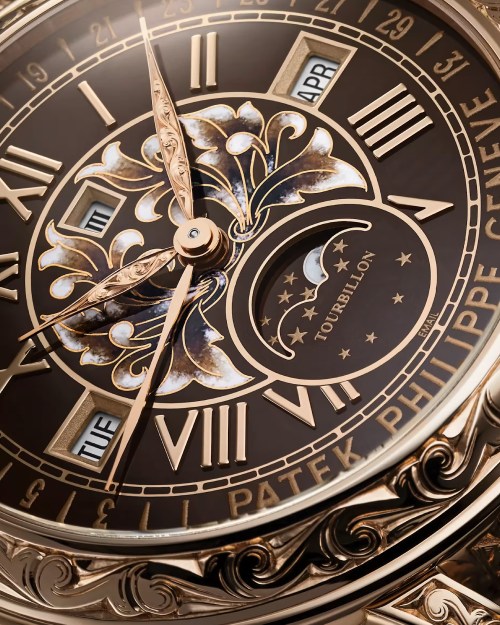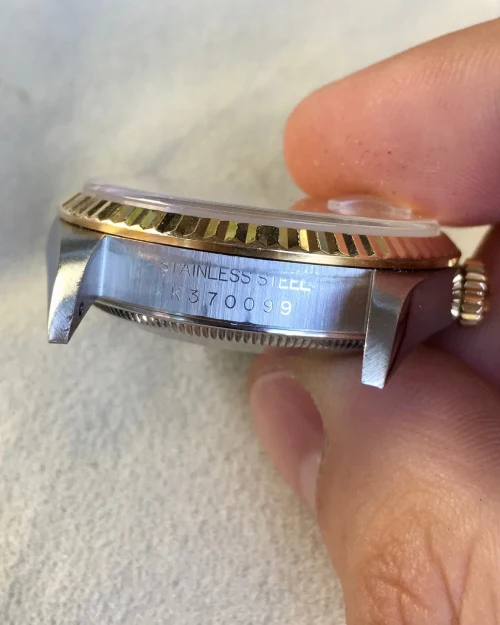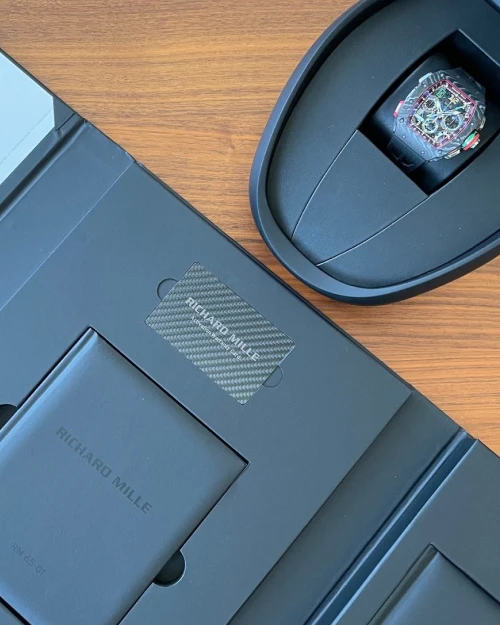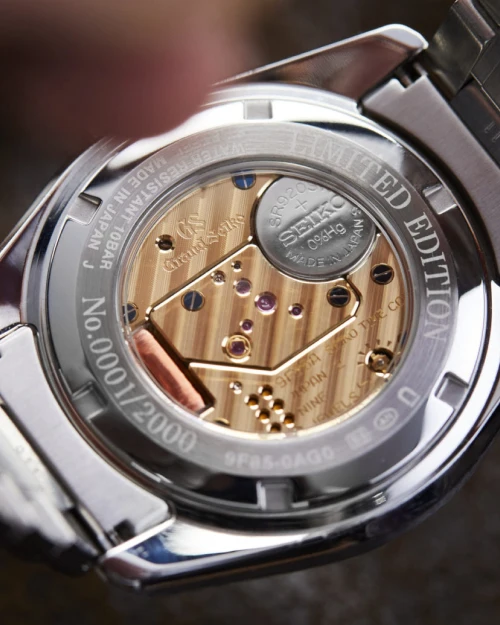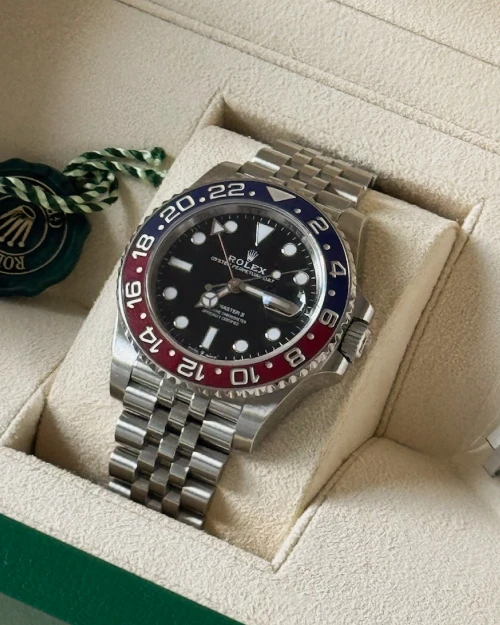How a Mechanical Watch Works: The Complete Beginner’s Guide
July 17, 2025
7 Minutes
Mechanical watches are more than just tools that measure time—they're remarkable pieces of engineering, history, and art. From casual enthusiasts to seasoned collectors, the allure of mechanical watches captivates audiences worldwide, particularly among aspiring Australian collectors keen to understand their inner workings.
If you've ever wondered exactly how a mechanical watch works, this guide will demystify the complexity, showcasing precisely what makes these luxury timepieces so revered.
What Is a Mechanical Watch?
At its most basic, a mechanical watch uses intricate, precisely engineered components and no electronic parts to measure time. Unlike digital or quartz watches powered by batteries, mechanical watches operate purely through mechanical energy.
Mechanical watches are especially admired for their craftsmanship, tradition, and prestige—qualities deeply cherished by luxury brands like Rolex, Patek Philippe, and Omega. While technology has evolved significantly, the charm and complexity of luxury watch mechanics remain unrivalled.
The Core Components Inside a Mechanical Watch
Understanding the internal components of a mechanical watch can feel overwhelming at first. Let’s break down the most important parts clearly and simply:
1. Mainspring
- Function: Stores the energy required to power the watch.
- Imagine this as the fuel tank of a car. It stores potential energy that's released slowly.
- Hand-winding or automatic movements wind the mainspring to power the watch.
2. Gear Train
- Function: Transfers stored energy from the mainspring to other parts of the watch.
- Think of this as the gearbox in your car—it ensures energy moves correctly and efficiently.
- Each gear is meticulously crafted to achieve accuracy and smoothness.
3. Escapement
- Function: Controls the release of energy from the gear train, ensuring precise intervals (ticks).
- Comparable to a car’s brake pedal that ensures controlled stopping.
- The escapement’s rhythmic ticking sound is what many associate with mechanical watches.
4. Balance Wheel
- Function: Oscillates at a consistent frequency, regulating time accuracy.
- Imagine a pendulum—it swings back and forth at a precise interval.
- A critical component ensuring consistent performance.
5. Dial Train and Hands
- Function: Transfers movement energy into visual time indication.
- The last stage where internal mechanics translate into readable time.
Manual vs. Automatic Mechanical Watches
Mechanical watches fall into two categories: manual (hand-wound) and automatic. Both types are fully mechanical, but differ in how they generate power.
Manual Mechanical Watches:
- Must be wound manually by turning the crown.
- Usually require winding every 24–48 hours.
- Offer tactile interaction, a sense of tradition, and intimate ownership.
Automatic Mechanical Watches:
- Self-winding via natural wrist movement.
- Contain a rotor that rotates freely, winding the mainspring automatically.
- Convenience for daily wear without manual winding.
Pros & Cons:
TypeProsConsManualConnection, classic experienceRegular winding requiredAutomaticConvenience, no manual windingCan lose accuracy if rarely worn
How Timekeeping Actually Happens Inside the Watch
Now that you know the parts, let’s explore exactly how watches keep time:
Step-by-Step Process:
- Energy stored: The mainspring winds, storing mechanical energy.
- Energy transmitted: Gear train transfers this energy precisely.
- Energy regulated: Escapement and balance wheel control the rate of energy release.
- Visual indication: Dial train moves the watch hands, displaying the time.
Ticking vs Sweeping Seconds
- Mechanical watches often feature smooth sweeping second hands, unlike the ticking motion of quartz watches.
- This smoothness signifies quality and mechanical precision.
Accuracy and Limitations
- Typical mechanical watches are accurate within ±5–15 seconds/day.
- Advanced models (Rolex Submariner, Omega Speedmaster) can achieve chronometer certification, improving accuracy.
Mechanical vs. Quartz: What’s the Difference?
When choosing your first luxury watch, you’ll encounter the terms mechanical and quartz. Understanding their differences will help you choose wisely.
- Mechanical watches run without batteries, driven entirely by mechanical parts.
- Quartz watches use battery-powered electronic circuits with quartz crystals for accurate timekeeping.
Mechanical Watch Advantages:
- Prestige, craftsmanship, collectibility
- Longevity and heirloom quality
- Intrinsic investment value
Quartz Watch Advantages:
- Affordable
- Highly accurate
- Minimal maintenance
Why Luxury Brands Prefer Mechanical Watches
- Mechanical movements embody tradition, artistry, and status.
- Craftsmanship and complexity enhance their perceived and real value.
Why Mechanical Watches Still Matter Today
In a world dominated by technology, mechanical watches remain relevant—and valuable—for several compelling reasons:
Craftsmanship & Tradition
- Handcrafted movements symbolize heritage and meticulous craftsmanship.
- Owning a mechanical watch is akin to owning wearable art.
Collectibility & Value
- Luxury mechanical watches often appreciate or maintain their value.
- Iconic watches (like the Patek Philippe Calatrava) retain prestige, often becoming family heirlooms.
Emotional and Investment Appeal
- The emotional connection to winding, maintaining, and wearing a mechanical watch is unmatched.
- Many collectors view mechanical watches as tangible investments.
Tips for First-Time Buyers
Entering the mechanical watch world can be daunting. Here are practical tips to guide your decision:
What to Look For:
- Brand reputation (Rolex, Omega, Patek Philippe)
- Movement type (automatic vs manual)
- Condition and service history (especially pre-owned watches)
- Resale potential and collectibility
Entry-Level Luxury Options:
- Rolex Oyster Perpetual: Timeless, versatile entry into Rolex.
- Omega Speedmaster Professional: Legendary heritage and versatility.
- TAG Heuer Carrera: Affordable, sporty, and refined.
Maintenance Expectations:
- Mechanical watches require regular servicing every 4–6 years.
- Periodic winding and use maintain optimum performance.
Got a Watch to Sell? We’re Buying!
Looking to sell your luxury watch? At Buy Your Watch, we offer:
Instant Payment
No-Fuss Transaction
Fast Valuation
Top Dollar Paid
Got a Watch to Sell? We’re Buying!
Looking to sell your luxury watch? At Buy Your Watch, we offer:
Instant Payment
No-Fuss Transaction
Fast Valuation
Top Dollar Paid
NEED YOUR WATCH REPAIRED? WE’VE GOT YOU COVERED!
Looking to service your luxury timepiece? At Buy Your Watch, we offer:
